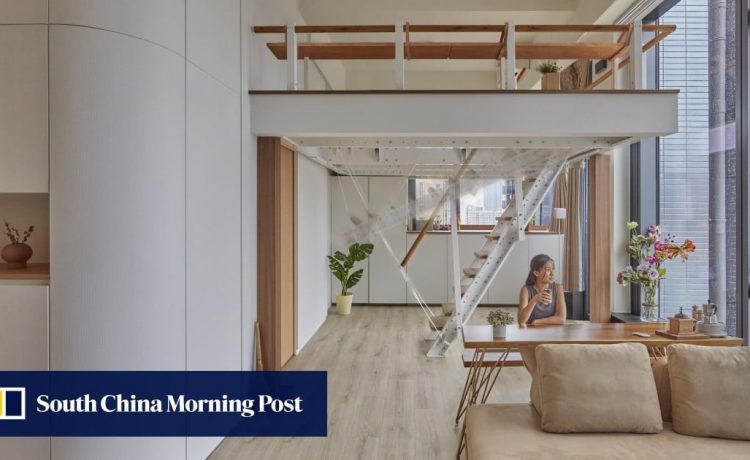So when Norman Ung, co-founder of Design Eight Five Two (DEFT), had just 266 sq ft (25 square metres) to work with inside his micro flat in Tai Wai, in the New Territories, a platform was an obvious solution.
He did not stop there. To achieve his goal of creating the same comfort and space afforded by larger homes, Ung made the platform transformable.
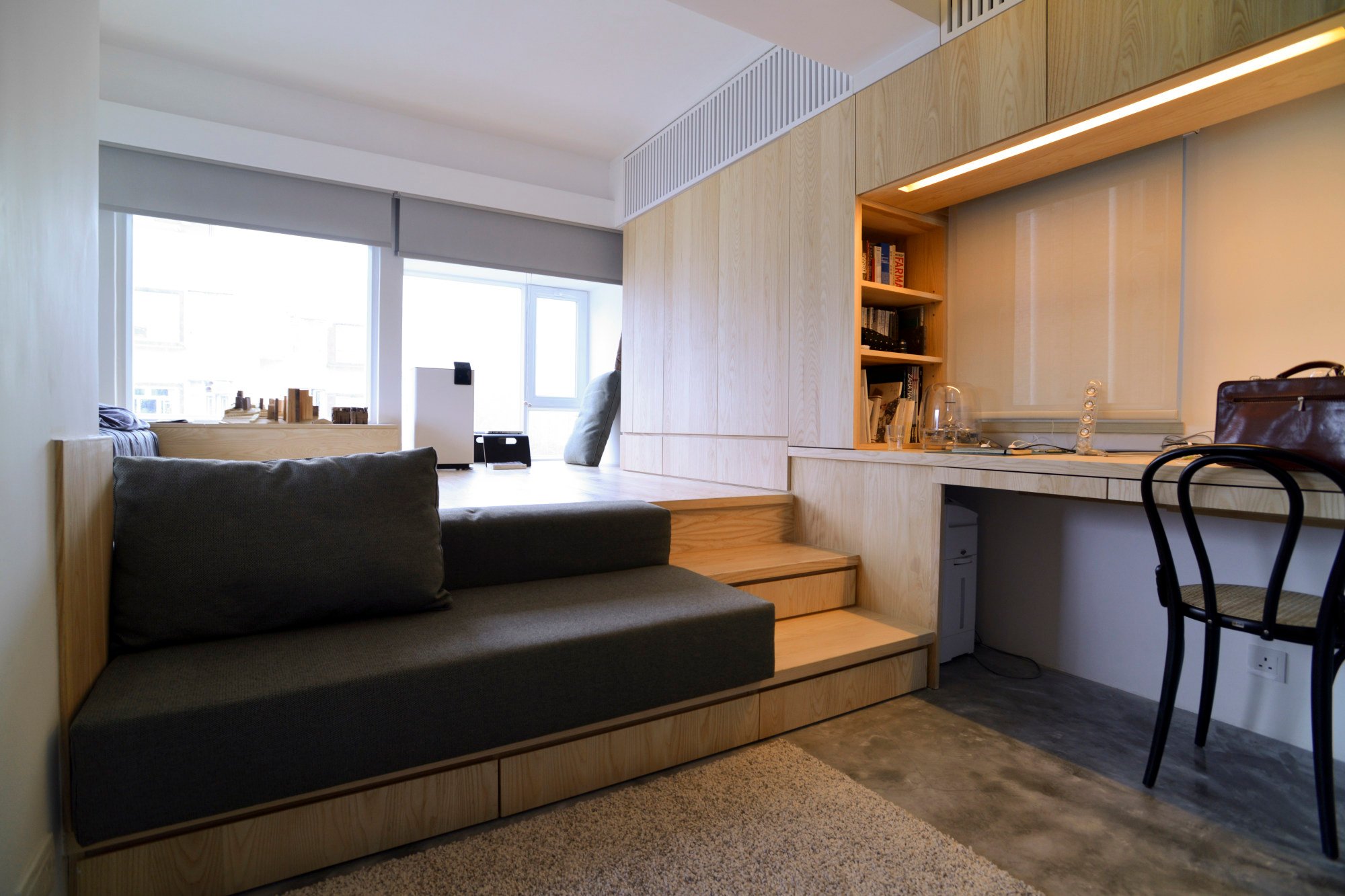
The platform aligns with an existing bay window so a streamlined look is achieved, its ash wood finish adding a designer touch.
Still needing space to store larger items, Ung created a cavity next to the front door – a space hitherto wasted. Meanwhile, behind a partition holding a television is a series of deep, pull-out drawers he designed to disappear, maintaining the minimalist aesthetic desired.
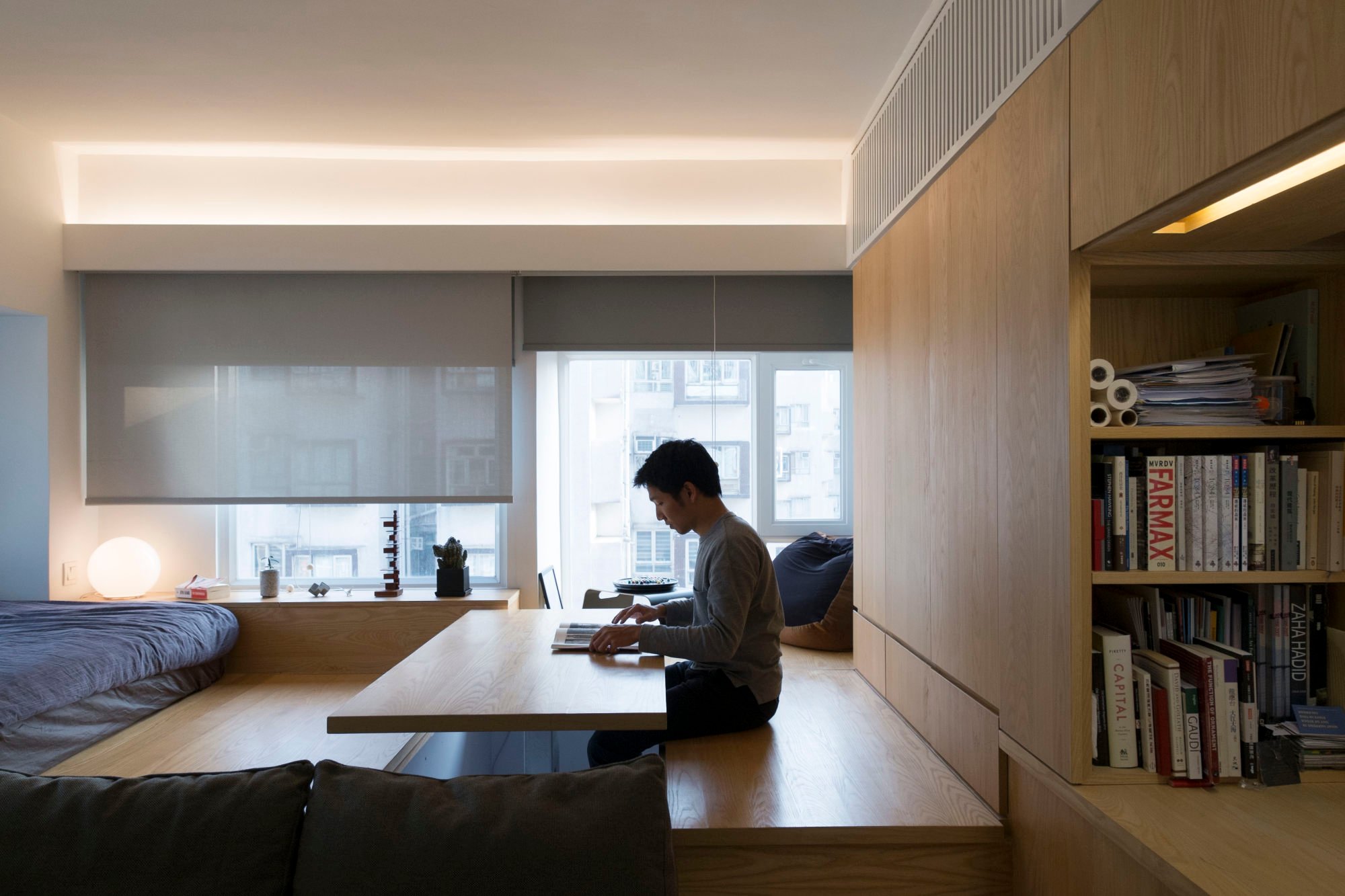
Another option, if headroom allows, is to create a mezzanine. Patrick Lam Kwai-pui, founder of Sim-Plex Design Studio, used this technique for a client who wanted both a larger entertainment space and a dedicated area for yoga practice in her 400 sq ft Kowloon apartment.
The key to Lam’s solution lay in the flat’s 3.4-metre-high (11-foot-high) ceiling.
After demolishing the walls of two tiny bedrooms, Lam installed an elevated platform suspended 1.8 metres above the expanded, open-plan living area.
The stainless-steel structure, which permanently holds a double bed and desk, is accessed via a folding staircase operated by remote control. The motor is hidden within new living room cabinetry, as are various storage compartments, keeping the whole space uncluttered.
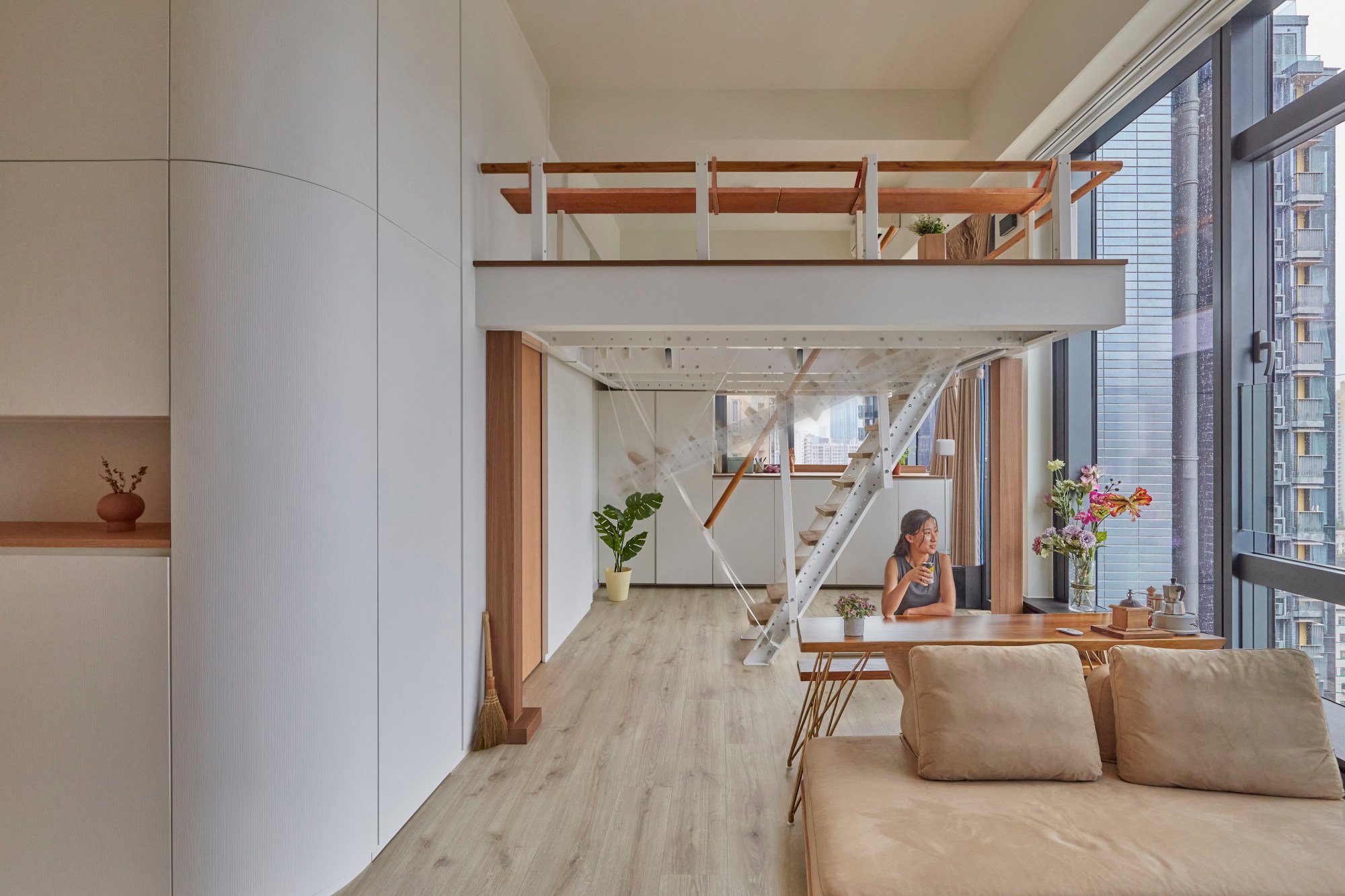
According to Lam, creating two spaces where once there was one overcomes the dilemma of homeowners wanting, but not being able to afford, a larger apartment.
Even if your flat is double-storey, having multiple small rooms can make the space feel tight. One way JAAK Design overcomes this is by toning down the appearance of structural elements.
In the remodel of an 850 sq ft Kennedy Town duplex on Hong Kong Island, the staircase sat incongruously at the head of the dining table, dominating the living/dining area. To soften the aesthetic, JAAK’s team shielded the stairs with a decorative wooden screen.
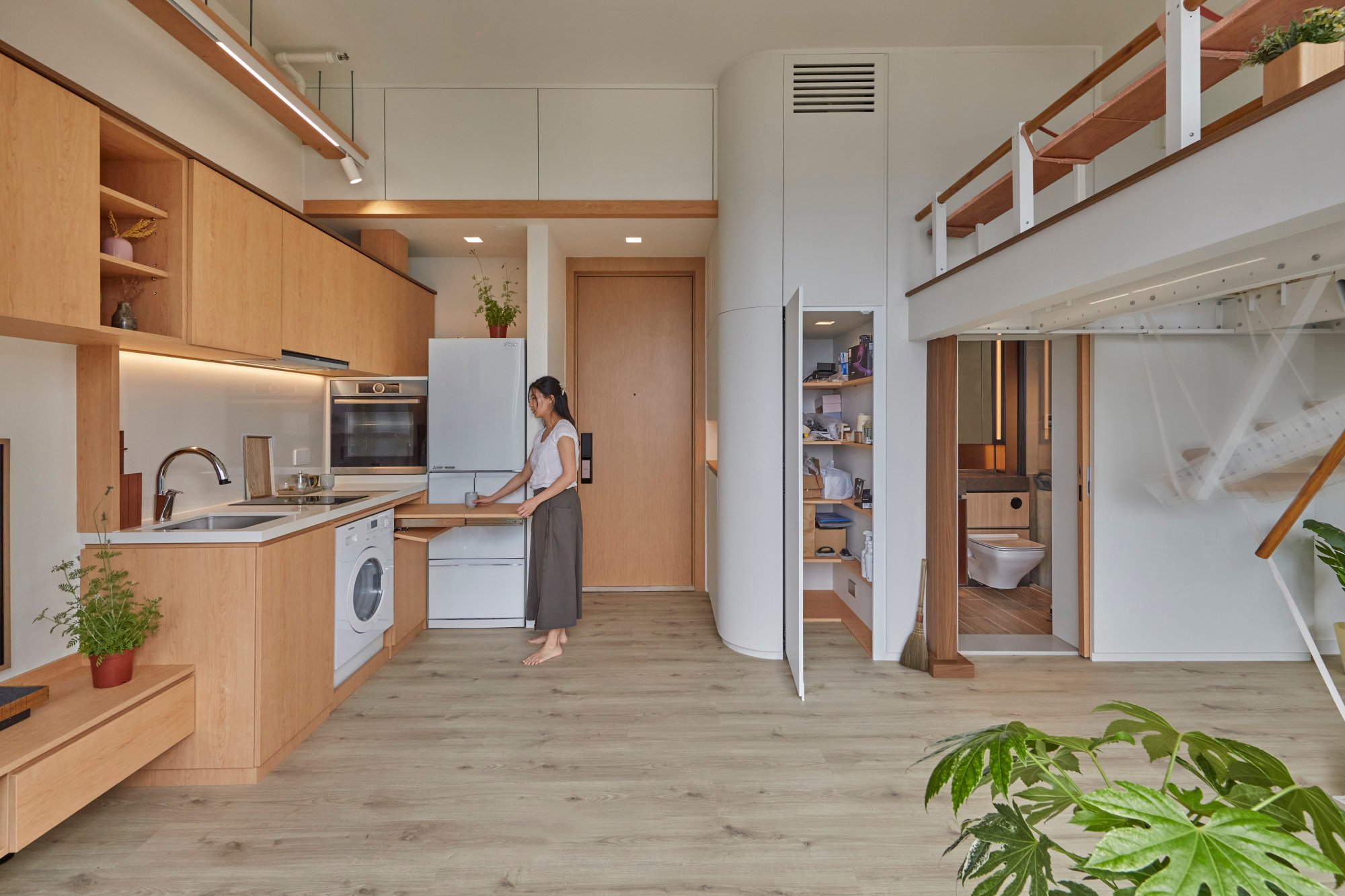
“It changes the bulky feeling of traditional stair railings and becomes a feature wall behind the dining table.” Rattan and reeded glass are other materials suitable for building a screen in a smaller flat, he says.
Otto Ng, design director at LAAB, also takes inspiration from Japanese space-saving techniques.
“In sharing the problem of space limitation, I think there is a lot Hong Kong and Japan can learn from each other,” he says. “However, in order to work, our design also needs to be context-specific.
“For example, Hong Kong has very different weather conditions compared to Japan, so we need to be careful when it comes to material selection.”
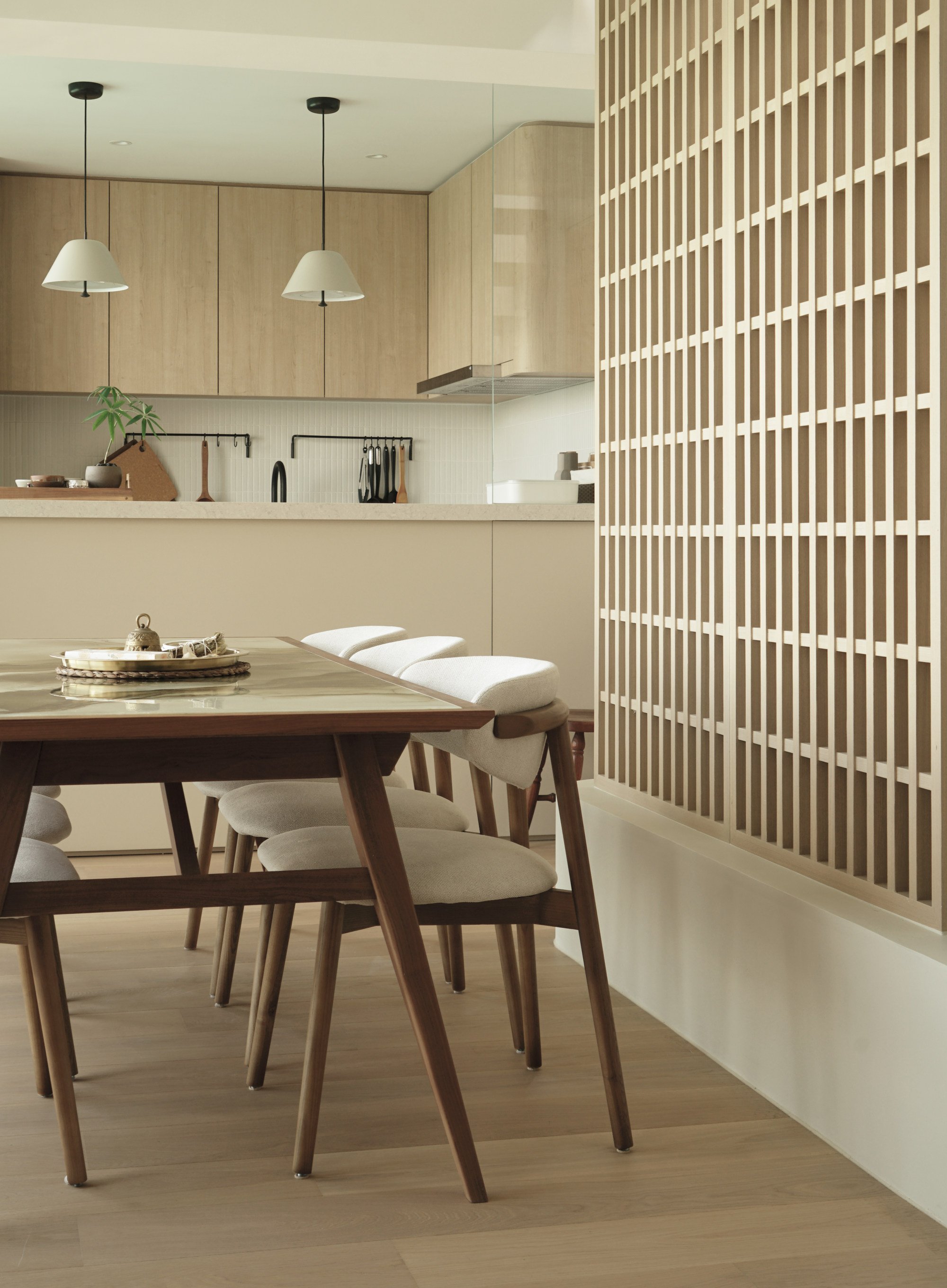
At 667 sq ft, the Kowloon apartment he refurbished in 2022 was not exactly small, but the owners wanted a tranquil space, where they could enjoy the company of family and friends.
“Our design approach was rooted in the principles of simplicity and mindfulness, prioritising the elimination of clutter through various space-saving strategies,” Ng says.
This is achieved through a range of bespoke elements that, in streamlining the interior, emphasised the apartment’s sweeping views of Victoria Harbour.
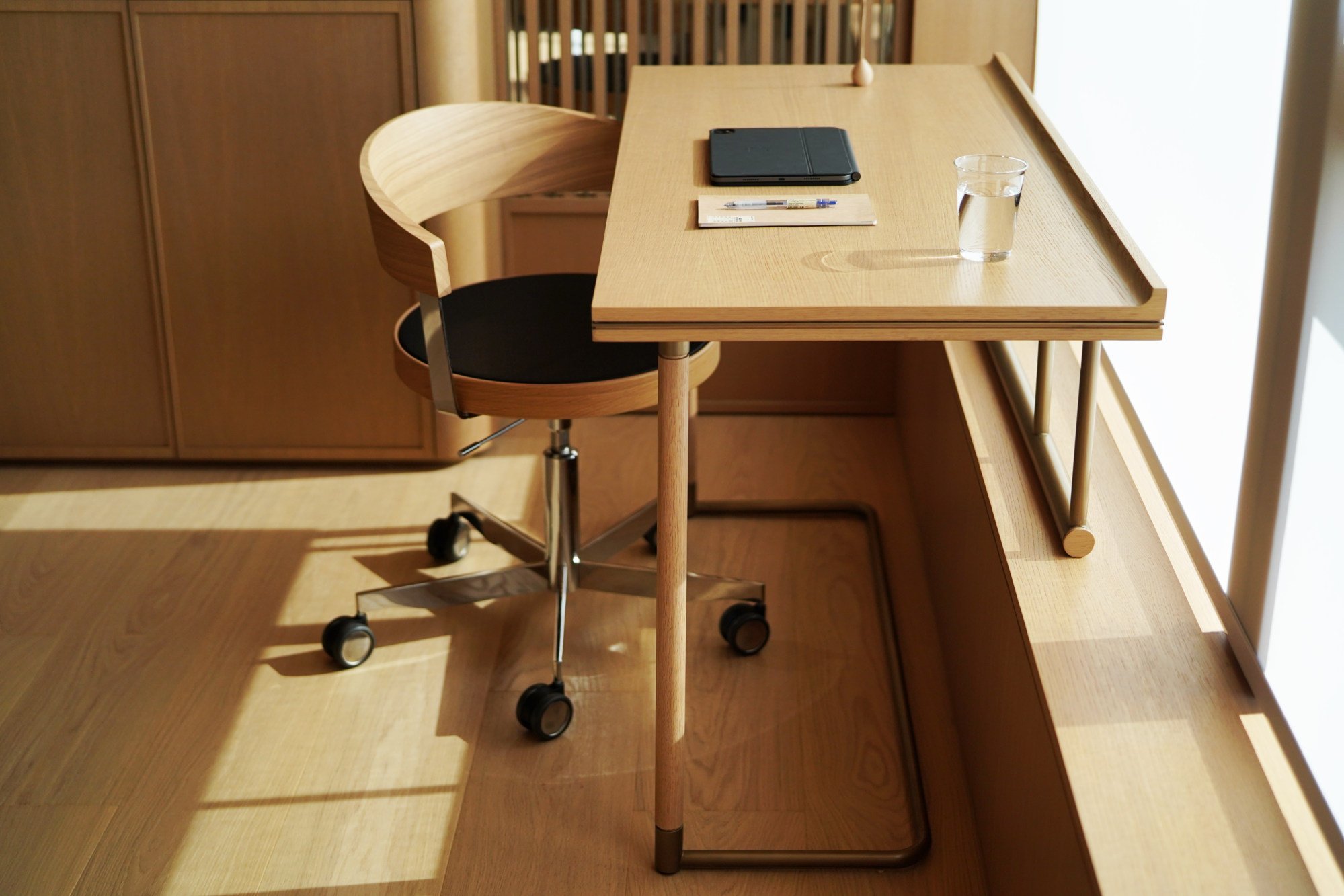
With the addition of a sliding oak and brass desk that glides along the living room windowsill, an unobtrusive work station is created, commanding one of the best views in the flat.
A custom-designed tapparelle screen (a rolling shutter) incorporates a television on both sides, while pocket doors can be deployed to divide the living room and main bedroom as needed.
Tailoring storage cabinets to the specific dimensions of the owners’ household essentials is another way of optimising every nook and cranny.
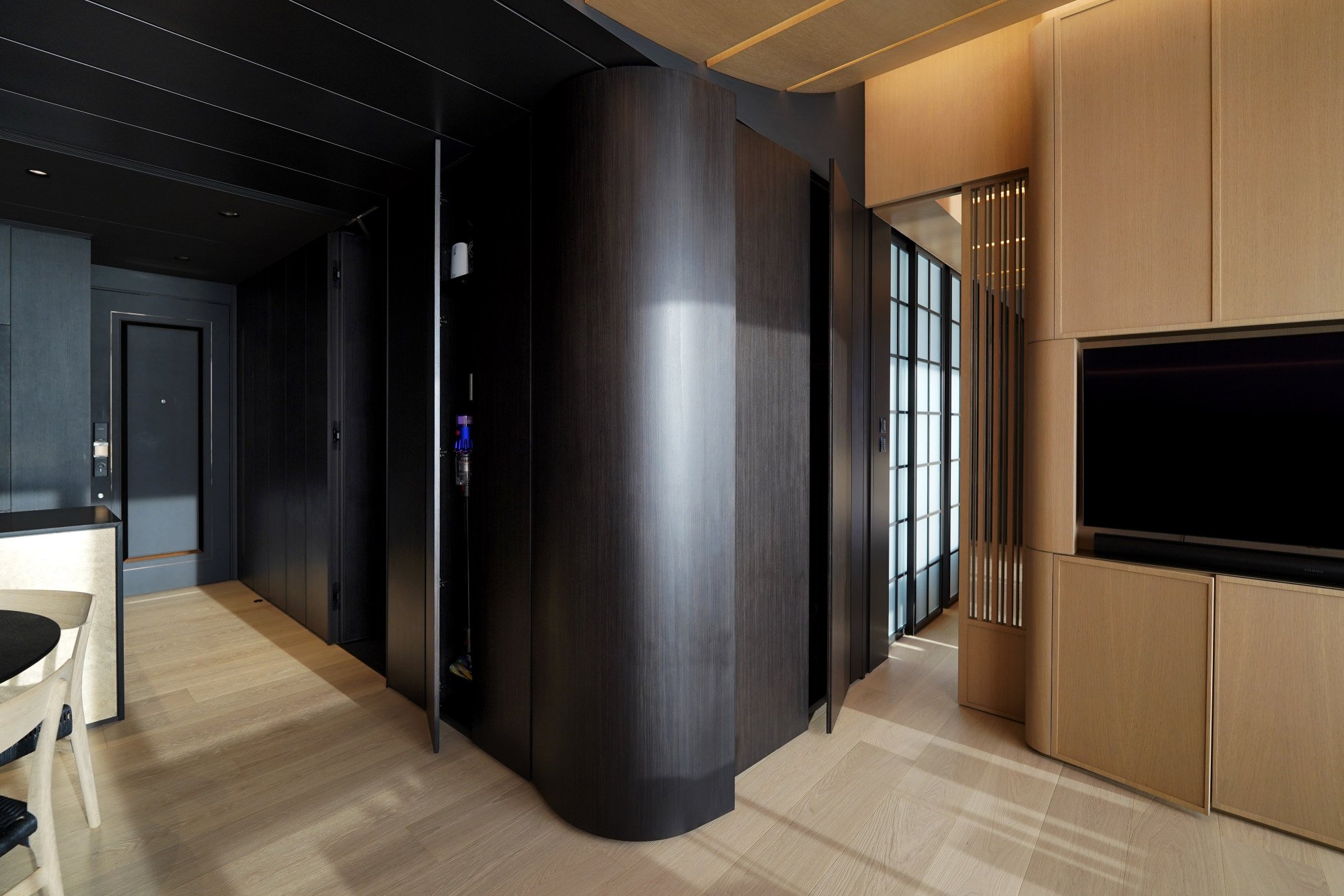
Regardless of limited space, a pet is a cherished member of many Hong Kong households. They have their habits just like us: preferred sleeping spots, dining areas and places for exercise and play, says Karr Yip, founder of ADO.
“In a shared living space, careful planning allows everyone to live harmoniously, build relationships and avoid interfering with each other.”
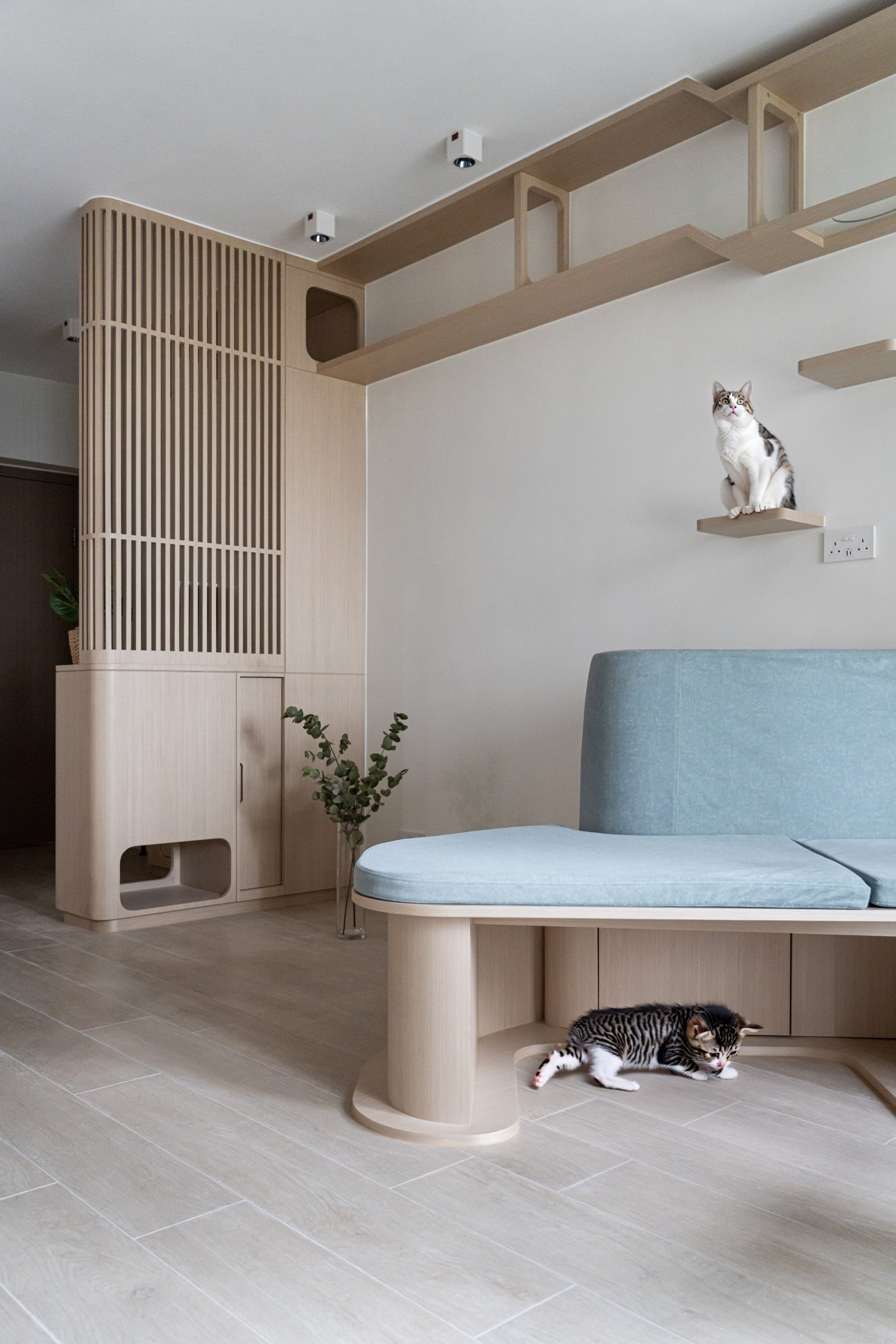
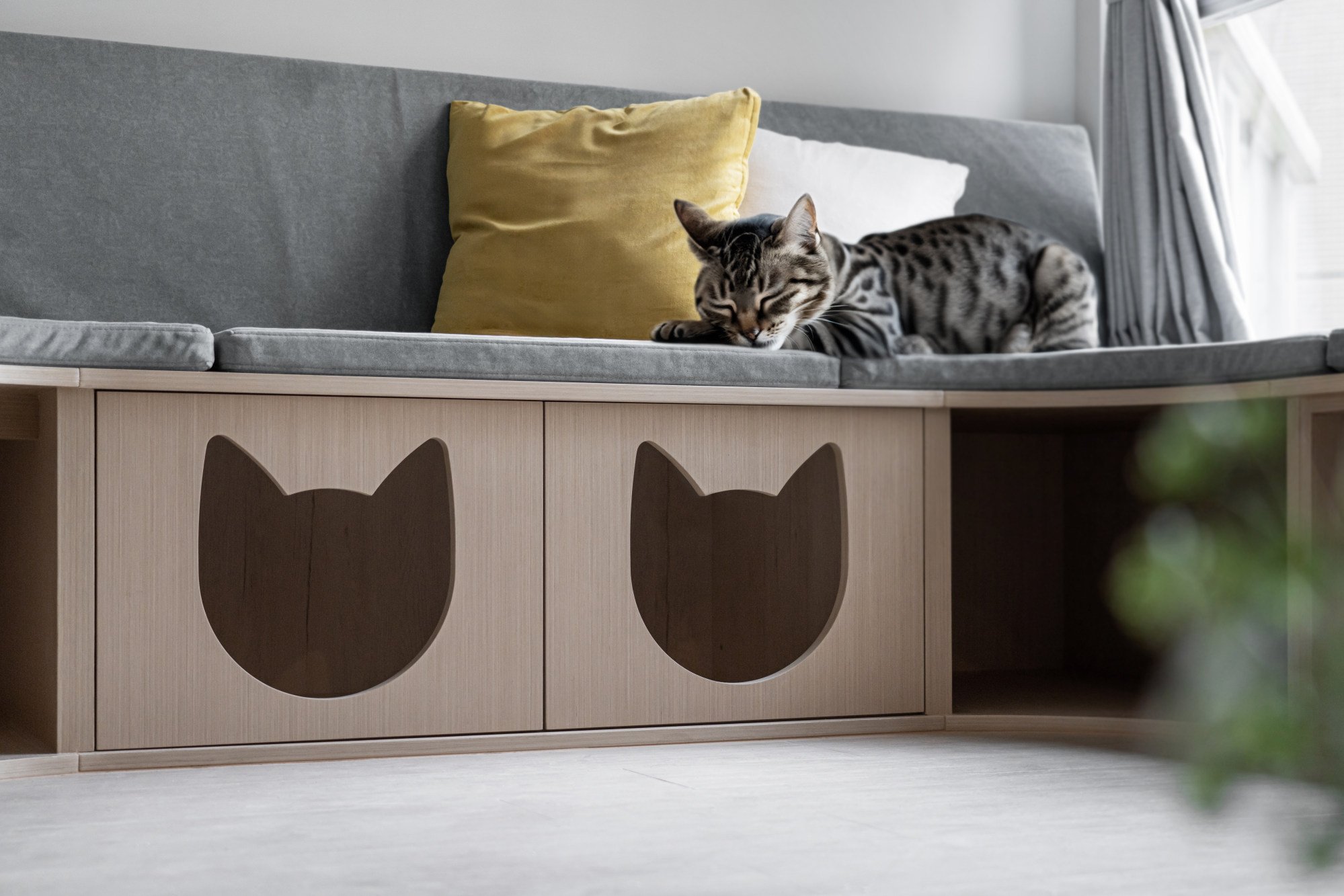
ADO’s solutions have included a sofa designed for human and feline comfort upholstered in a special soft, scratch-resistant, easy-to-clean and water-repellent fabric, with cut-outs underneath for cats to hide and sleep.
In a separate project, removable cushions on a wood veneer banquette keep the dining area free from cat hair and claw damage.
“We have also designed decorative shelves on living room walls doubling as jumping platforms for cats, and high-level shelves near the ceiling,” Yip adds. “Creating a pathway for the cats to walk on and rest integrates the living spaces for the owner and their pets, allowing for a harmonious coexistence.”
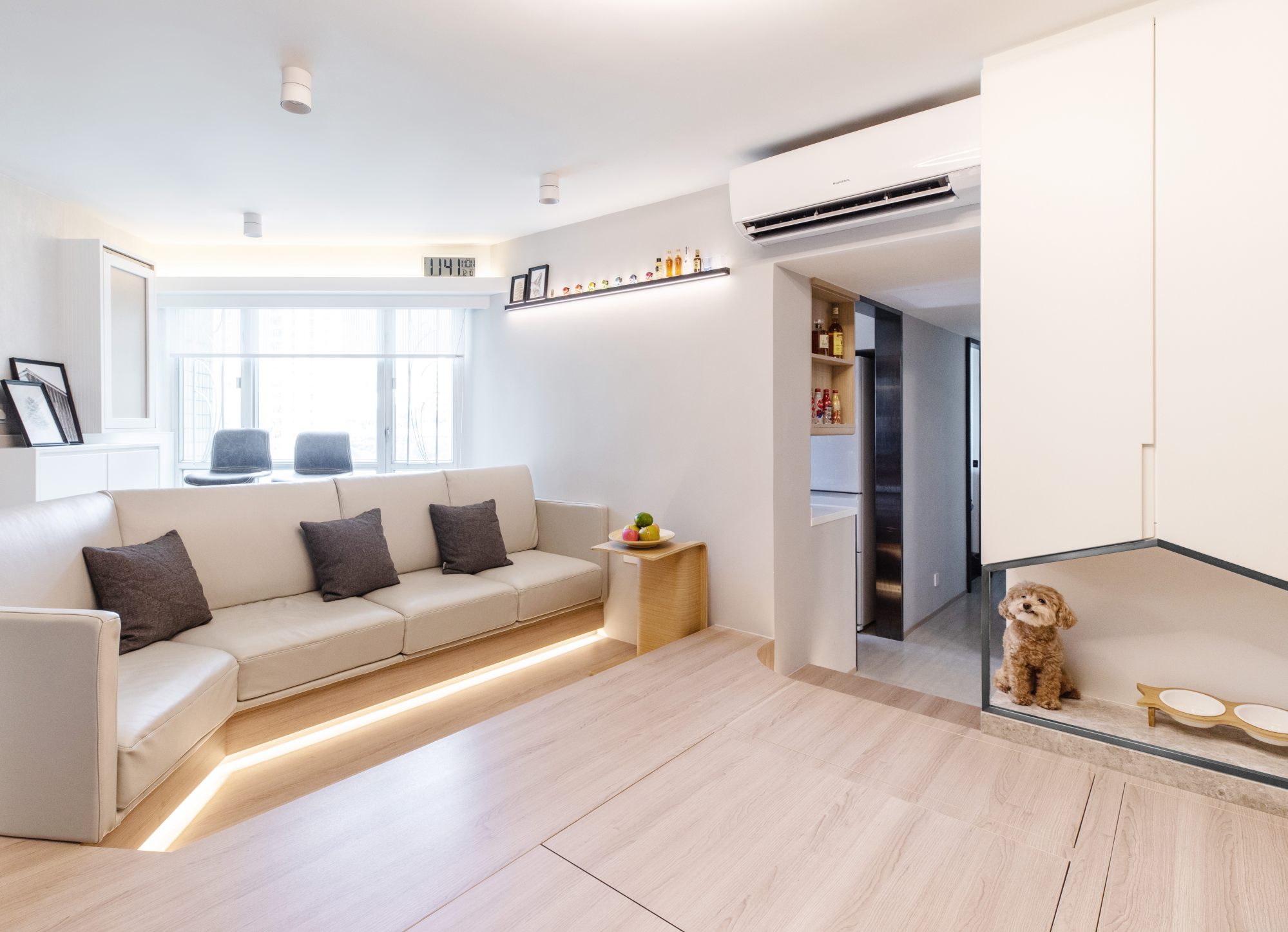
Alvin Cheng Ka-heng, creative director at MAD Studio, adds that dogs can be catered for, too. Integrating a dedicated space for a cherished dog into the living room cabinetry of one 650 sq ft Diamond Hill flat met this need perfectly, with the area holding the pet’s bed and, during the day, bowls for food and water.
“Integration allows one’s pet best friend, being an important member of the household, to have its own cosy space like the rest of the family members,” Cheng says. “As this project shows, it also adds playfulness to the overall design.”

